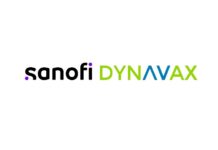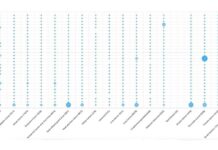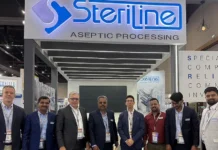Discover how sustainable packaging practices can help you reduce environmental impact and significantly cut costs.
Read on to uncover the connection between sustainability and profitability in switching to sustainable pharmaceutical packaging solutions starting today.
Understanding the Cost Implications of Traditional Packaging
Traditional packaging in the pharmaceutical industry often involves various types, such as plastics, glass, and metals. Each has cost implications, including the price of raw materials, the labor required for packaging, and the expenses related to waste management.
The choice of packaging can lead to increased costs in two ways. First, directly through the high prices of raw materials and labor. Second, indirectly due to inefficient waste management, which requires additional resources.
Thus, the costs linked with traditional packaging aren’t just financial but also environmental. Using unsustainable packaging materials contributes to waste and pollution. This inefficiency strains ecological resources and impacts the company’s bottom line. Hence, exploring sustainable packaging options is crucial to reduce environmental and economic costs.
The Concept of Sustainable Packaging
Sustainable packaging? What does it mean, exactly? Simply put, it’s an approach to packaging that considers the entire lifecycle of a product, from sourcing and production to disposal or reuse. It incorporates three core principles: effectiveness, efficiency, and life cycle.
Primarily, sustainable packaging ensures that the product is protected and preserved effectively. It considers the need for safe, reliable containment of pharmaceutical products to prevent contamination and maintain their efficacy.
Efficiency revolves around optimizing material and energy inputs. The goal is to do the job with less waste and reduced energy usage. This, in turn, means lower costs.
Finally, the cycle of life refers to a cradle-to-cradle perspective. The materials used should either be recyclable or compostable, which helps in waste management, another avenue for potential cost savings.
Sustainable packaging embraces materials like compostable plastics and FSC® certified materials. These materials reduce environmental impact and can be cost-effective in the long run. They embody the sweet spot where sustainability meets profitability, a key goal for any modern pharmaceutical company.
How Sustainable Packaging Cuts Costs
Let’s cut to the chase. How does sustainable packaging translate into cost savings? The magic ingredients are reduced material usage, minimized waste, and improved efficiency.
By design, sustainable packaging uses less material. Fewer resources mean less expense in purchasing raw materials. Considering that this saving applies to every item you package, the numbers start adding up fast.
Next, let’s talk about waste. Traditional packaging often leaves you with heaps of wasted material. These ‘leftovers’ are an environmental issue and a drain on your resources. Disposing of waste costs money. With sustainable packaging, waste is drastically reduced, easing pressure on your waste management budget.
Lastly, efficiency gets a boost with sustainable packaging. Modern, sustainable packaging solutions are often designed to be user-friendly and quickly assembled. This can lead to a significant reduction in labor costs, another plus on the balance sheet.
Sustainable packaging isn’t just good for the planet. It’s also good for your bottom line.
Steps to Transitioning to Sustainable Packaging
Now, if you’re wondering how to transition to sustainable packaging, here are a few steps.
Conduct a Packaging Audit: Examine your current packaging operations. Identify areas of waste, inefficiency, or high cost. It’s about discovering the ‘what’ and ‘why’ before moving to the ‘how.’
Research Sustainable Alternatives: Look for materials and designs that minimize environmental impact without sacrificing quality. Compostable plastics, FSC® certified materials, and post-consumer waste can be excellent alternatives.
Plan the Transition: This step involves calculating the costs and benefits of the switch. You’ll need to consider the initial investment, potential savings, and the expected ROI.
Implement New Designs: Replace your existing packaging with sustainable versions. Depending on your strategy and resources, it might be a gradual transition or an all-at-once approach.
Overcome Potential Barriers: Change can be challenging. Expect and plan for resistance, whether the cost of new equipment or the inertia of old habits.
It’s not an overnight process, but with each step, you’ll move towards a more sustainable – and cost-effective – future. Remember, the journey of a thousand miles begins with a single step.
The Role of Packaging Equipment in Sustainability and Cost-Savings
Choosing the right equipment is a crucial part of sustainable packaging. It’s like hiring the best team players – their performance can make or break the game.
Efficiency: Opt for machinery that promises high efficiency with low waste. Machines with low rejection rates and high-speed operations can save material and time.
Energy Consumption: Machines designed with energy conservation in mind reduce operating costs and carbon footprints. It’s a win-win situation for you and the planet.
Lifecycle Approach: Look for equipment manufacturers who adopt a lifecycle approach. These might offer machine rebuilds and rentals, extending the usable life of their products and reducing waste.
Smart Features: Modern machines come with smart features like automation and optimization. They can adapt to changes, prevent errors, and minimize waste.
Maintenance and Support: A breakdown can disrupt operations, causing delays and costs. Ensure your supplier offers reliable maintenance and support.
Making the right choice in packaging machinery is like setting the stage for a successful performance. It can significantly contribute to your sustainability goals and your bottom line. Choose wisely.
Like any great endeavor, it takes planning, effort, and time. Yet, the rewards are undeniable. Beyond cost savings, you gain a priceless reputation as a company that cares – about its products, people, and planet.
Start small. Take one step at a time. Gradually, sustainability will become second nature. The journey may be challenging, but the destination is worth it. A future where the environment thrives and your business prospers – that’s a vision worth striving for. So, are you ready to take the plunge?



















